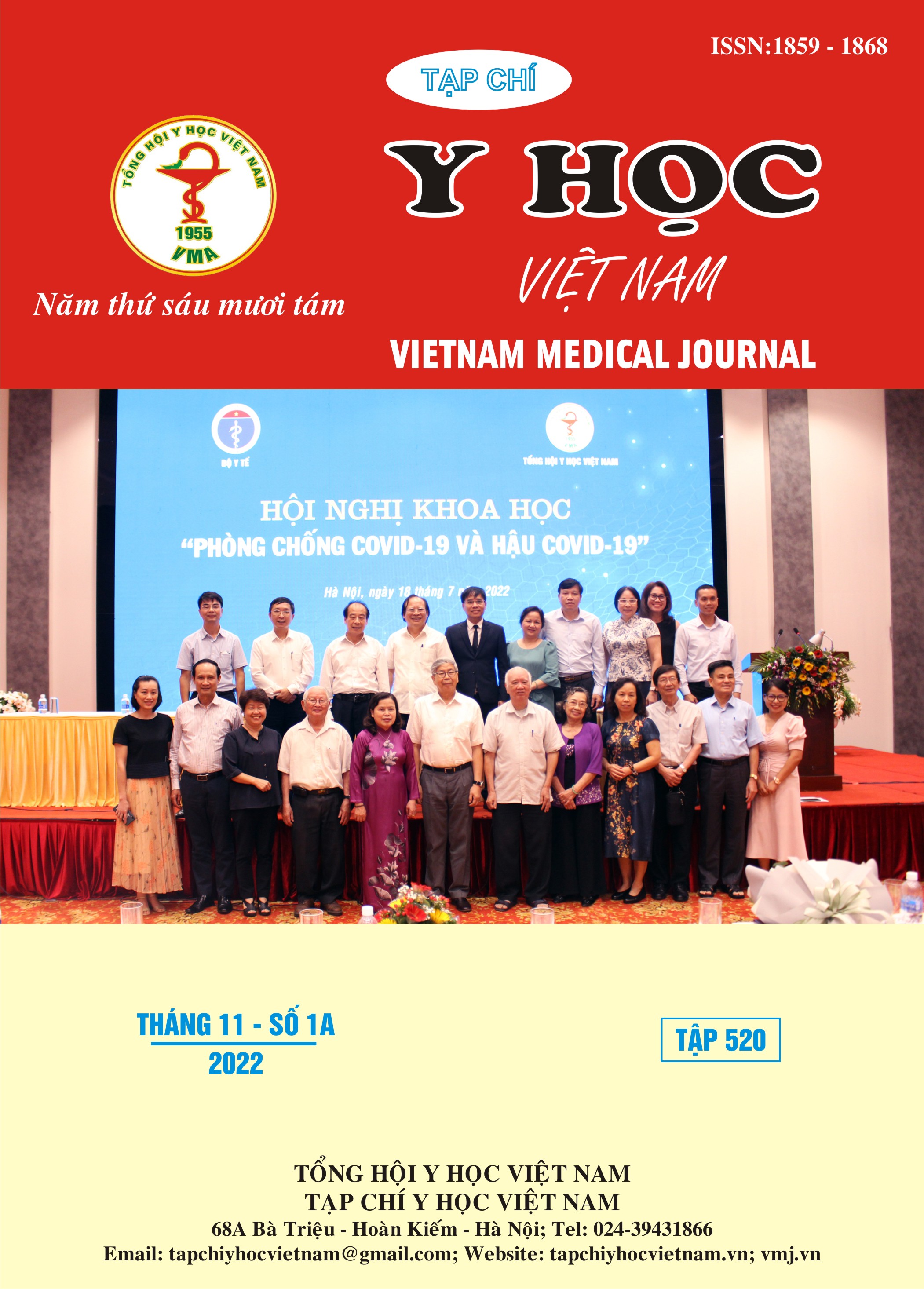ĐẶC ĐIỂM LÂM SÀNG RỐI LOẠN TRẦM CẢM Ở NGƯỜI BỆNH PHÌ ĐẠI LÀNH TÍNH TUYẾN TIỀN LIỆT
Nội dung chính của bài viết
Tóm tắt
Đặt vấn đề: Trầm cảm thường gặp ở người bệnh phì đại lành tính tuyến tiền liệt, sự xuất hiện trầm cảm có thể để lại những hậu quả bất lợi như tăng nhu cầu sử dụng các dịch vụ y tế, giảm tuân thủ điều trị, thời gian nằm viện lâu hơn, và suy giảm chức năng. Mục tiêu: Mô tả đặc điểm lâm sàng rối loạn trầm cảm ở người bệnh phì đại lành tính tuyến tiền liệt. Đối tượng và phương pháp nghiên cứu: Nghiên cứu mô tả cắt ngang 111 người bệnh phì đại lành tính tuyến tiền liệt khám và điều trị Bệnh viện Bạch Mai và Bệnh viện Lão Khoa Trung Ương từ tháng 08/2021 đến tháng 08/2022. Kết quả: Đối tượng nghiên cứu chủ yếu là người bệnh trên 60 tuổi (90,1%); độ tuổi trung bình 70,08 ± 8,15; nơi sinh sống chủ yếu ở nông thôn (63,1%); trình độ học vấn trung học cơ sở (31,5%). Có 26,1% người bệnh có rối loạn trầm cảm theo ICD10, trong đó trầm cảm nhẹ chiếm 18,7%; triệu chứng khởi phát hay gặp nhất là buồn chán, bi quan (37,9%); trong các triệu chứng đặc trưng của trầm cảm, khí sắc trầm là hay gặp nhất (89,7%); trong các triệu chứng phổ biến của trầm cảm, hay gặp nhất là rối loạn giấc ngủ (96,5%). Kết luận: Trầm cảm là rối loạn tâm thần thường gặp ở người bệnh phì đại lành tính tuyến tiền liệt. Trầm cảm thường khởi phát đầu tiên bởi buồn chán, bi quan. Triệu chứng đặc trưng hay gặp nhất là khí sắc trầm, triệu chứng phổ biến hay gặp là rối loạn giấc ngủ.
Chi tiết bài viết
Từ khóa
Trầm cảm, phì đại lành tính tuyến tiền liệt, đặc điểm lâm sàng
Tài liệu tham khảo
2. Pietrzyk B, Olszanecka-Glinianowicz M, Owczarek A. Depressive symptoms in patients diagnosed with benign prostatic hyperplasia. Int Urol Nephrol. 2015;47(3):431-440. doi:10.1007/ s11255-015-0920-5
3. Ma L, Zhao X, Liu H. Antidepression medication improves quality of life in elderly patients with benign prostatic hyperplasia and depression. Int J Clin Exp Med. 2015;8(3):4031-4037.
4. Sözeri-Varma G. Depression in the Elderly: Clinical Features and Risk Factors. Aging Dis. 2012;3(6):465-471.
5. Breyer BN, Kenfield SA, Blaschko SD. The association of lower urinary tract symptoms, depression and suicidal ideation: data from the 2005-2006 and 2007-2008 National Health and Nutrition Examination Survey. J Urol. 2014; 191 (5):1333-1339. doi:10.1016/ j.juro. 2013.12.012
6. Ngọc TN, Tâm DM. 6. Đặc điểm lâm sàng rối loạn trầm cảm ở người bệnh suy tim điều trị tại Viện Tim mạch Quốc gia - Bệnh viện Bạch Mai. Tạp Chí Nghiên Cứu Học. 2022;153(5):41-48. doi:10.52852/tcncyh.v153i5.800
7. Glover L, Gannon K, McLoughlin J. Men’s experiences of having lower urinary tract symptoms: factors relating to bother. BJU Int. 2004;94(4):563-567. doi:10.1111/j.1464-410X. 2004.05001.x
8. Lee SU, Lee SH, So AH. Association between benign prostatic hyperplasia and suicide in South Korea: A nationwide retrospective cohort study. PLoS ONE. 2022;17(3):e0265060. doi:10.1371/ journal.pone.0265060


